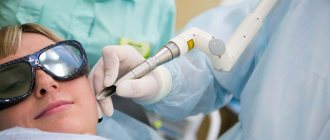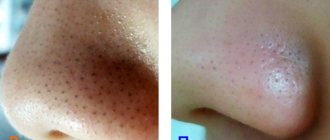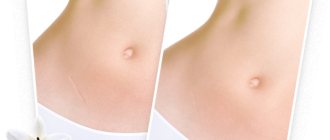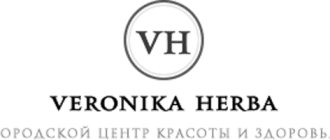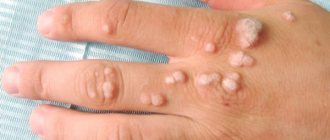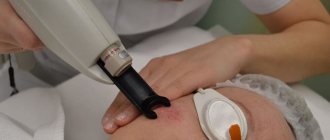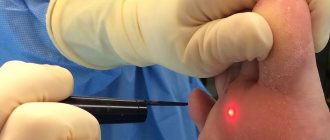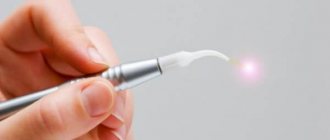Anyone can be interested in scar camouflage. It is not necessary to have a profession that involves constant risk, or to be a fan of extreme sports. The causes of scars vary from accidental falls in childhood to serious injuries. People with thin skin know that even minor scratches leave marks.
If scars are almost inevitable, then what remains: to come to terms with them and have a complex, being embarrassed to show your body and choosing special clothes, or to find an effective way to say goodbye forever to the scars that cause you discomfort? In modern conditions, you can absolutely choose the second option - and enjoy your body.
At the same time, you don’t have to spend fabulous amounts of money and a lot of time to eliminate skin defects that bother you. What are the ways to deal with scars and how to choose the one that suits you? We will talk about the two most popular methods of getting rid of the consequences of violation of the integrity of the skin. Today, clients choose between laser resurfacing and scar camouflage based on the features of these procedures.
The principle of laser scar removal method
Laser scar removal (reviews about the procedure are mostly positive) is carried out after examining the patient.
Laser scar removal is an effective modern cosmetic procedure for smoothing out skin imperfections from injuries, stretch marks, acne, and cuts.
During the inspection, the specialist identifies the type of damage:
- Scars of atrophic type. The defect looks like a depression in the skin caused by weight loss, burns, or chicken pox. Most often they are found in the areas of the hips, chest, abdomen and legs.
- Stretch marks. The defect is formed due to rapid stretching of the skin. They can form during weight loss or pregnancy.
- Keloid type scars. The most difficult case. Dark burgundy bumps on the skin are visible to the naked eye. Scars form after surgery due to the synthesis of excess collagen at the incision sites.
- Scars of hypertrophic type. Purple scars are formed from connective fibrous tissue. Occurs with deep wounds.
- Scars of normotrophic type. The mildest skin defect. The scars are pale pink in color. They occur after abrasions, scratches and cuts have healed.
Depending on the type of damage, the type of laser that will be used in the skin resurfacing process is determined.
The specialist also clarifies a number of parameters:
- the area of skin that needs to be treated;
- depth and intensity of impact;
- laser wavelength and spectrum;
- duration of the procedure.
Skin defects are eliminated with an erbium or neodymium laser.
Advantages and disadvantages
Cosmetic laser skin resurfacing has a number of advantages. The patient does not need to be observed in a hospital: after the procedure, he is sent home 2-3 hours later. Scars can be removed with laser anywhere (including the bikini area). A positive result is noticeable after a short time. The leather does not need to be pre-treated.
The laser has no effect on healthy skin tissue. During the procedure, not only stretch marks and normotrophic scars are reduced, but also keloid scars. The technique is considered universal: it is used in practice regardless of the patient’s ethnicity.
Disadvantages include the presence of absolute contraindications to resurfacing and the high cost of the procedure.
Contraindications
Laser scar removal (reviews prove the effectiveness of the technique) has a number of contraindications.
The following are considered absolute restrictions:
- the presence of diseases of the central nervous system or mental disorders;
- long-term use of drugs that can slow down the coagulation process;
- diseases of infectious etiology;
- individual characteristics of the body. in which keloid scars rapidly form;
- skin damage, including eczema and dermatitis;
- diabetes mellitus (regardless of type);
- the period of bearing a child and feeding him breast milk;
- growth of benign and malignant neoplasms.
It is strictly forbidden for people under the influence of drugs or alcohol to undergo laser facial resurfacing. During the hot season, it is recommended to refrain from cosmetic procedures. In summer, the body produces melanin in large quantities, so pigment spots may appear on the face after exposure.
How does laser work in scar treatment?
Laser scar treatment is the only procedure that can reduce the depth of scars and eliminate them permanently.
The essence of laser scar treatment is to remove the top layers of skin along with scar tissue. At the same time, restoration processes in the treated areas are enhanced, new young collagen and elastin are synthesized, which leads to the formation of a normal structure of the dermis.
It should be noted that red fresh scars and keloid scars are not always indications for scar resurfacing. As a rule, you should wait until the inflammation subsides and the formation of scar tissue stops before performing the laser scar removal procedure. On average, this process takes up to six months.
Types of laser removal of facial scars
Laser scar removal (reviews will help you verify the effectiveness of the method) is carried out in several ways (depending on the type of exposure). The specialist selects the type of laser suitable for a particular patient during a visual examination. If the skin is sensitive enough, the procedure is carried out under local anesthesia.
The scar layer is removed in 25-35 minutes. During laser resurfacing, excess fluid from the cells evaporates, so after manipulation it is necessary to restore the water balance. Scars are removed with an erbium or neodymium laser.
Erbium
Under the influence of a laser wave, the skin is heated. The grinding procedure ensures cleansing of dead cells and starts the regeneration process. The laser is a large instrument containing erbitol mixed with quartz. The device is equipped with a transmitter and laser beam amplifier.
During exposure, blood circulation in the skin is normalized, which minimizes the risk of swelling and edema. In addition to smoothing scars, the laser restores the process of collagen synthesis. This allows you to reduce the number of facial wrinkles. During the procedure, the skin is cleared of pigment spots.
Neodymium
When exposed to a neodymium laser, not only the scars are smoothed out, but also the elasticity of the skin is restored. Non-ablative rejuvenation is based on stimulation of collagen production processes. The neodymium laser quickly and painlessly removes arterial and venous networks.
People with sensitive skin may experience slight discomfort during resurfacing. The beam penetrates into the deep layers of the skin, so the procedure can be performed under local anesthesia.
Laser skin resurfacing: what is it?
Dermabrasion is a peeling procedure of the epidermis, as a result of which the dermis is partially removed. To implement the method, a laser is used, which activates collagen production. The penetration depth of the laser beam is 150 microns, which allows it to reach the basement membrane. As a result, the relief of the scar is smoothed out, leveling it out.
Types of grinding
Depending on which laser is used, there are several types of dermabrasion.
- Laser resurfacing is effective in getting rid of scars that form due to improper fusion of wound edges, injuries, and a tendency to develop keloid scars. In fact, the beam penetrates the connective tissue and completely destroys it, stimulating the active development and division of neighboring epidermal cells.
- Fractional resurfacing is carried out with an erbium or carbon dioxide laser. The latter is more gentle on the skin. If handled carelessly, the epidermis becomes very hot, which can lead to burns.
- Carbon dioxide laser is not comparable to scar camouflage, because, although it guarantees the most noticeable result, it can also lead to complications. And the rehabilitation period is particularly long and complex.
- Traditional laser resurfacing involves the beam penetrating deep into and destroying the affected layers of skin. The high efficiency of the method is accompanied by a long recovery period.
- Erbium laser provides a good lifting effect. The beam affects the affected areas of the epidermis, over which new cells are “pulled together.” Variable laser power allows you to change the depth of action of the beam.
Features of the procedure
Suitable for people of any age. It is necessary to ensure that there are no allergic reactions or skin diseases. To make the process more effective, it is recommended to pre-chemically peel the upper layers of the skin. The effectiveness also depends on the phototype. The darker the skin, the higher the likelihood of pigmentation developing. Bleaching is carried out in order to avoid possible negative consequences.
How is laser resurfacing performed?
When choosing between scar camouflage and laser resurfacing, it is necessary to take into account the specifics of its implementation. Preliminary preparation consists of applying an external anesthetic (gel, spray). If the case is complex, it may even be possible to use general anesthesia. After the laser works, the skin becomes light white, this indicates that the beam has penetrated the basement membrane. Next, the anesthetic is applied again and the laser is repeated until the affected layers are completely removed. The duration of the procedure depends on the area of the affected area, the condition of the skin, its type and other individual characteristics of the patient.
Skin care after resurfacing
For several days after laser exposure, it is forbidden to touch the skin with your hands or apply cosmetics. At first, the area is covered with a sterile bandage. After a week, crusts form that cannot be torn off on your own. This is a natural process, after which the epidermis becomes covered with red spots, which completely disappear within 3-6 months. Depending on the type of sanding and the size of the area being treated, recovery can take from a couple of weeks to several months.
Preparation
Laser removal of scars and scars requires certain preparation. According to reviews, it is necessary to adhere to a diet for several days before and after the procedure. It is necessary to completely remove from the diet foods that can provoke an allergic reaction. Experts also recommend avoiding spicy, salty and smoked foods that cause thirst.
Before laser scar removal, you should not eat fried, smoked or salted foods.
Before the session, the patient must consult with a doctor: the specialist will explain the principle of the procedure, the stages of its implementation, possible contraindications and complications.
To achieve optimal results, you need to properly prepare for sanding:
- 2 weeks before the session, stop taking hormonal drugs, antibiotics, photosensitizing drugs and retinoids;
- stop taking painkillers, anticoagulants, analgesics and antispasmodics 48 hours before;
- 2 weeks before the session, procedures during which the skin is exposed to ultraviolet radiation are completely abandoned.
The patient is required to donate blood for hepatitis and HIV in advance.
How to stop a keloid from growing?
Hormonal therapy is used with great success for this purpose. Do you still flinch at the word “hormones”? In vain. A correctly administered hormonal drug in an individually selected dosage does not produce side effects
, does not disrupt metabolism and does not have a systemic effect on the body.
However, there are nuances. The main one is the words “correctly selected and correctly entered.” It is necessary that the drug is used strictly according to indications and is injected carefully into the scar.
The usual hormonal therapy regimen that stops the growth of a keloid includes injections of corticosteroids (Diprospan or Kenolog-40) strictly once every 4 weeks. These drugs block the synthesis of collagen, which forms the basis of the scar.
Gamma irradiation and the use of silicone pressure bandages are auxiliary methods. The latter relieve itching and pain, but not only that. Dressings disrupt scar nutrition and collagen synthesis, stopping its growth.
At the first stage, cryotherapy is also recommended - cauterization with nitrogen. Cryodestruction (freezing) can stop the development and even destroy the keloid. Radiation therapy (the so-called Bucca therapy) is sometimes used: irradiation of the scar with radio rays of a certain frequency.
The entire first stage of treatment has the sole goal of stopping the growth of the keloid and lightening it. A calm scar ceases to cause discomfort and decreases in volume. Congratulations! This is a very good result. Often this is where it makes sense to complete the treatment, especially if the keloid is located on an inconspicuous area of the body.
Keloid has a high tendency to re-grow. To avoid such a development of events, experienced surgeons do not recommend continuing treatment with the goal of making the scar narrower and shorter: any impact on the keloid can trigger its new growth.
Stages of the procedure
It is impossible to say exactly how long laser scar resurfacing will last.
This indicator is purely individual and can be influenced by a number of factors:
- area of skin lesion;
- type of laser used in the process.
In most cases, the session lasts 20-60 minutes.
Before laser resurfacing, the patient signs documents, thereby confirming that he is familiar with the basic principles of laser resurfacing, warned about the possible consequences and agrees with its cost.
The laser cleaning procedure takes place in several stages:
- The patient lies down on the couch. An anesthetic solution is applied to him after preliminary cleansing of the skin.
- Using the program, the specialist selects the depth of exposure of the laser beam and the duration of the session.
- The anesthesia begins to take effect within 20-30 minutes. Mild discomfort (tingling, burning) is considered normal. Severe pain may indicate poor quality anesthesia.
- After smoothing the scars, apply a nourishing cream or any other hypoallergenic product to the skin to help restore water balance.
The patient can leave the cosmetologist’s office after 30-60 minutes. after laser resurfacing.
Post-acne correction techniques
Before the era of laser technology, there was no effective and safe treatment for acne scars. In order to correct them, deep peelings were used, which often resulted in burns, continuous scarring of the treated area and a questionable aesthetic result 2, 3.
Currently, the most effective, fast and safe method of treating atrophic post-acne scars is the use of DOT and DROT therapy using the SmartXide2 from DEKA (Italy).
The advantages of this technique include not only the combination of a CO2 laser with RF radiation, but also the ability to modulate the pulse shape and the presence of five levels of stacks (patented technology from DEKA).
The effectiveness of treatment of scar tissue with the SmartXide2 laser device consists of the following factors:
- Point fractional vaporization of microscopic areas of the skin occurs at a strictly specified depth, which leads to a reduction in the area of the treated area, the formation of tissue heating zones (in undamaged areas of the skin) and, as a result, active stimulation of new collagen.
- When using DROT therapy, the initial effect on the tissue is made by a CO2 laser pulse, preparing the skin for subsequent exposure to RF radiation by increasing blood flow in the dermis, as a result of which its conductivity for thermal energy significantly increases. Subsequent RF radiation, penetrating deeply into the dermis, can provide intense and long-term stimulation of fibroblasts without damaging the skin. It is noted that even when choosing higher parameters of laser energy when using combined (DROT) therapy, an increase in the recovery period is not typical.
- For laser therapy of post-acne scars, the depth of penetration of the laser beam and the ability to flexibly change this parameter are fundamentally important. SmartXide2 allows, due to the stacking mode from 1 to 5 levels, to adjust the depth of exposure without pronounced lateral thermal damage, making it possible to carry out highly effective and differentiated laser therapy for scars with minimal risk of side effects, even when using high laser energy parameters.
- An undeniable advantage in working with scars is the ability to modulate the pulse shape. In particular, when working with deep atrophic scars and thick porous skin, the D-Pulse pulse shape is preferred. This form of pulse has a high peak power, which does not depend on the subsequent thermal part, which makes it possible to achieve pronounced tissue shrinkage and leveling of its relief.
It must be especially emphasized that the basis for the effectiveness of this laser is a combination of parameters: modulation of the pulse shape, adjustable depth of impact (stacks) and adjustable distance between points, which provides doctors with effective opportunities to control the nature of the impact, individualize therapy and avoid the occurrence of excessive thermal damage to the lateral zones, which directly reduces the risk of post-inflammatory hyperpigmentation. This is especially relevant when treating scars in patients with skin phototype III and higher.
In addition to the general standard contraindications for laser therapy, special attention should be paid to patients receiving oral retinoid treatment for the treatment of acne. When taking them, thinning of the skin, the occurrence of hypersensitivity (including to solar radiation), impaired cell differentiation, and slower repair may be observed. Therefore, in this category of patients, laser therapy for post-acne scars is contraindicated for use during the entire period of drug therapy and 6 months after it in order to prevent the occurrence of dyschromia and pathological scarring.
How many sessions will it take to completely get rid of facial scars?
It is almost impossible to get rid of scars in one session. The number of procedures directly depends on the location, severity and size of the scars.
Approximate timing (depending on the type of defect):
- Normotrophic scars are completely smoothed out in 2-3 sessions.
- Atrophic scars are deeper, so their elimination will require up to 4 sessions.
- Hypertrophic scars are considered defects of moderate severity. To smooth out damaged skin, up to 5-6 sessions are necessary.
- Keloid scars are eliminated in several stages. In addition to laser therapy, the patient should use medications that help smooth the skin. Over several procedures, a reduction in the scar by 5-60% is observed (compared to the original size).
A full course of laser therapy includes up to 10 sessions. They are carried out regularly, maintaining an interval of 2-4 weeks.
How long does it take for the treated area to heal?
Facial restoration after CO2 laser resurfacing takes from 7 to 14 days, depending on the depth of beam penetration. After the procedure, swelling occurs. It peaks on the second or third day and then subsides by the fifth or seventh day. Redness and itching are normal and should not be a cause for concern. During the first week, varying degrees of crust formation are observed. It is necessary to apply open or closed dressings until complete healing.
Apply a light, water-based moisturizer for the next 2-3 weeks. Avoid products containing acids such as salicylic, glycolic, etc. in your daily care until the skin is completely restored. After healing, use sunscreen.
A return visit to the clinic where the procedure was performed is usually required after 2-3 days, then a week, 3-4 weeks, 3 months, 6 months and 1 year after resurfacing.
Photos before and after, results
The result is noticeable after 2-3 sessions. To achieve the desired effect, experts recommend taking a full course of laser resurfacing, during which the scars will resolve. Renewed and healthy skin appears at the site of defects.
Further skin care
The recovery period after laser resurfacing is several weeks. To reduce this period, you must adhere to all medical prescriptions. It is strictly forbidden to allow dust, contaminants, or substances that can cause irritation to come into contact with the skin.
If itching occurs, it is necessary to treat the affected area with an antiseptic and apply antipruritic ointments to it.
Within 5-10 days after laser resurfacing, the patient is prescribed antibacterial drugs to minimize the risk of skin infection. To reduce swelling and reduce the severity of pain attacks, take non-hormonal anti-inflammatory drugs and analgesics.
The air in the room where the patient spends most of his time should be humid. The skin must be protected from ultraviolet rays, so experts recommend wearing masks when going outside. The skin is regularly treated with gentle antiseptics that cannot cause a burn. You cannot visit saunas and steam baths for 30 days after laser resurfacing.
During this period, creams and lotions that contain alcohol are not applied to the skin. It is strictly prohibited to treat the cover with a solution of brilliant green or iodine. During healing, crusts form that cannot be removed independently. After polishing, the skin needs to be moisturized, so natural olive or sesame oils are applied to it.
When crusts form, ichor is released from the wounds. They are treated with a solution of 6% vinegar (1 tbsp per 200 ml of boiled cool water). Moisten a napkin in the resulting liquid and apply it to the affected area of the skin.
Possible complications
Complications arise when the cosmetologist fails to comply with the rules of asepsis and antisepsis or when the rules for skin care are neglected during the recovery period after laser resurfacing.
These include:
- An inflammatory reaction that lasts more than 72 hours. Complications are triggered by the individual characteristics of the skin.
- Infection. Occurs due to non-compliance with antiseptic rules before or during the procedure.
- Herpetic infection. Complications can be caused by herpes viruses, especially if the patient did not take appropriate medications 2 weeks before laser resurfacing.
If the patient has dilated capillaries, then the risk of persistent erythema is quite high. The condition persists for a long period of time (up to 8-12 months). It goes away on its own. To maintain vascular tone, you need to regularly take dietary supplements with omega-3 fatty acids.
Post-inflammatory hyperpigmentation is diagnosed in people with dark skin. The complication occurs against the background of increased melanin production. This category of patients is offered to take medications (retinoids, ascorbic and azelaic acid) that can reduce the activity of tyrosinase.
After removing scars on oily skin, seborrhea or acne may develop. This is triggered by inflammatory processes occurring inside the deep layers of the skin. The complication does not need to be treated; it goes away on its own after 45-60 days.
In people with thick skin, demarcation lines are formed after laser resurfacing. The boundaries between the affected area and the healthy area of the skin are clearly visible. The line is predominantly red. To smooth it out, dermabrasion or chemical peeling is performed.
Depigmentation is extremely rare.
When is CO2 laser resurfacing not recommended?
Like any procedure, laser rejuvenation has contraindications. The patient must carefully read this list, since laser exposure to the skin is a serious intervention with a risk of complications. Skin resurfacing is not recommended in the following cases:
- Active bacterial, viral or fungal infections
- Poor general health, inflammatory processes in the body
- Taking oral isotretinoin (Accutane) within the past 6 months
- Fitzpatrick skin phototypes 5-6 (very dark skin)
- Other resurfacing procedures within the previous 2-3 months
- Unwillingness to accept the possibility of complications
- Excessively thick or thin skin (determined by a doctor during consultation)
- Collagen vascular diseases
- Human immunodeficiency virus (HIV) or systemic infections
- Tendency to form keloid scars
- Metal piercing in the treated area
Price of the procedure
The cost varies depending on a number of factors. The price may be affected by the size and type of defect, the type of laser resurfacing and the location of the clinic. In Moscow and St. Petersburg, the cost of a session is higher compared to other cities.
Approximate prices:
| Type of procedure | Impact area | Price |
| Removal of keloid scars | 1 cm2 | 800-1200 rub. |
| Removal of hypertrophic and atrophic scars | 600-900 rub. | |
| Removal of stretch marks, normotrophic scars | 500-800 rub. |
Whether a cosmetologist has certificates confirming their qualifications may affect the cost of the procedure. There is no need to pay for consumables (antiseptic solutions, moisturizing serums) separately.
Laser removal of scars, scars and stretch marks can cost the patient 10,000-15,000 rubles. According to reviews, the procedure is quite effective and painless. Complications rarely occur if skin care rules are fully followed.
How does CO2 laser resurfacing work?
Ablative lasers, such as the CO2 laser, cause damage to the skin. The procedure removes a thin surface layer (epidermis) and heats the underlying layer (dermis). This stimulates the growth of new collagen fibers, the synthesis of which is slowed down for one reason or another. As the skin heals and new epidermal cells form, the treated skin becomes clearer, smoother, and firmer. Renewed skin is better supplied with blood and nutrients and absorbs care products better.
A similar effect can be achieved using non-ablative lasers such as pulsed light (IPL) devices. They do not damage the skin, but instead stimulate collagen synthesis and improve tone and texture. It is less invasive and requires less recovery time, while at the same time being less effective.
The cosmetologist chooses the type of laser depending on the patient’s existing problems and cosmetic goals.
